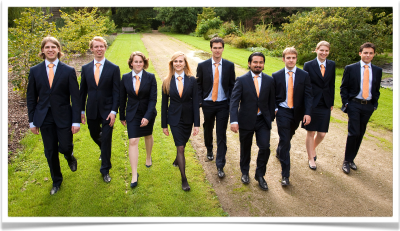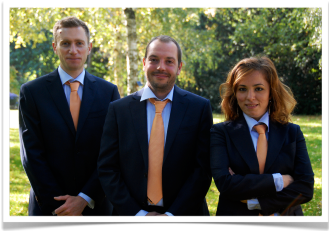Team:TU Delft/Team/organization
From 2010.igem.org
Team Organization
The 2010 Team is made up of nine students from both Life Science & Technology (LST) and Mathematics & Computer Science (EEMCS). Together with 3 supervisors we started in March 2010 with brainstorming on our project. It lasted until May before we finally choose our topic and started designing our Genetically Engineered Machine.
The members of the TU Delft team carry a broad range of multidisciplinary assets, but it should be noted that there is a large focus on wet lab work, due to the large number of students from Life Science and Technology. This study is collaboration of two top universities in the Netherlands, the Leiden University (molecular genetics and medicine) and the Technical University of Delft ((bio-)chemical and process engineering), combining fundamental research and applied sciences.
Task Division
Already early on in the project the several managerial tasks were divided among the team members. After we decided on our project topic we also formed sub-teams for each section. By doing so everyone got the chance to use their experience while learning from each other.
| Name | Position | Sub Project | Task |
| Mathias Voges | Student | Alkane Degradation | |
| Kira Schipper | Student | Alkane Degradation | Organizational manager & Safety |
| Nadine Bongaerts | Student | Hydrocarbon Sensing | PR & Fund-raising |
| Luke Bergwerff | Student | Modeling | |
| Hugo Cueto Rojas | Student | Salt & Solvent Tolerance | |
| Pieter van Boheemen | Student | Emulsifier | Fund-raising, Finance, Ethics & Wiki |
| Jelmer Cnossen | Student | Modeling | |
| Eva Brinkman | Student | Emulsifier | Lab Manager & PR |
| Ramon van der Valk | Student | Salt & Solvent Tolerance | |
| Aljoscha Wahl | Supervisor | ||
| Alessandro Abate | Supervisor | ||
| Esengül Yildirim | Supervisor |
Planning
Dwight Eisenhower already knew that plans are nothing; planning is everything. Especially concidering the little time in which the iGEM project has to be completed, a rough planning was adopted right from the start. We divided the project into three phases:
- Ready? - Brainstorming phase
The team members get to know each other, get a working knowledge of each other’s topic and start generating ideas. - Get set... - Design phase
The students define the biological design which they want to carry out, together with the project specifications. - Action! - Full time work
The (wet-lab) realization of the system and the evaluation of its performance.
Later on this resulted in the following planning:

Curious on how this all worked out? Check out our Project Timeline!
 "
"

